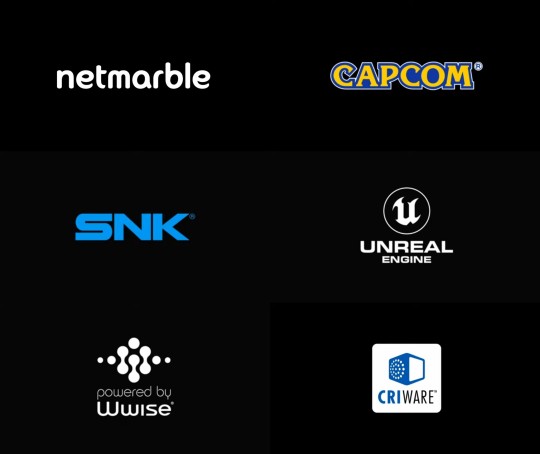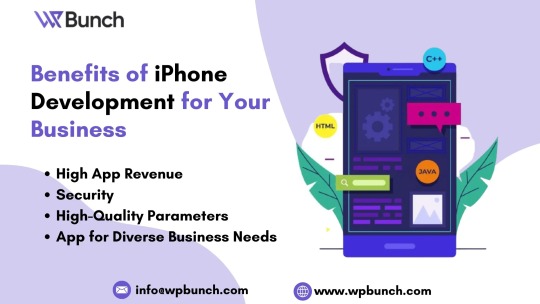#ios app vs android app
Explore tagged Tumblr posts
Text
iOS vs. Android: Which Platform is Right for Your App Development

Choosing the right platform for your app is a crucial decision. Developing for both platforms can maximize your reach, but it requires a larger budget and development team. Consider a hybrid approach, building a core app for one platform and then creating a lighter version for the other.
You can choose the simple platforms of iOS app development and Android app development to help you decide which one is best for your project.
1. Market Share
Android: Covers a larger global market. It's used by many different phone manufacturers, making it accessible to a wide audience." This continuation suggests that the platform being discussed enjoys adoption across various phone manufacturers, expanding its reach to a diverse global audience of users.
iOS: "Dominates in countries like the USA and Canada. iOS is only available on Apple devices, which are very popular in certain regions." This addition of a platform in specific countries with the limited availability of iOS, which is exclusive to Apple devices but enjoys significant popularity in particular regions like that.
2. User Demographics
Android: Attracts a diverse range of users. It’s popular in developing countries and among cost-conscious users." This continuation highlights that the platform being discussed appeals to a broad spectrum of users, including those in developing countries and individuals when choosing their devices or software solutions.
iOS: Provides customers with greater incomes who plan to spend on applications and in-app purchases. Developed countries are likely to support it.
3. Development Cost and Time
Android: It can be more difficult and expensive to build because of the range of displays and devices available." This statement indicates that developing the platform in question may pose challenges due to the diversity of devices and screen sizes it supports, increasing both the time and cost of app development efforts.
iOS: It is usually easier to test and optimize since there are fewer things to take into account, making development faster and less expensive." This suggests that the platform being discussed typically offers streamlined testing and processing, a more uniform set of devices, and optimization. As a result, developers may find it faster and more cost-effective to refine their apps for optimal performance.
4. Revenue Potential
Android: Has a higher download volume, but users typically spend less among apps." This expression suggests a situation where an app might have a large number of downloads or installations, but the users of the app tend not to make as many in-app purchases or spend money on premium features of other apps.
iOS: Users tend to spend more on apps and in-app purchases, leading to higher revenue for iOS developers." This trend suggests that the user base of the apps in question is more inclined to make purchases within the app, resulting in increased revenue generation for the developers.
5. App Store Policies
Android: The Google Play Store approval process streamlines and expedites the process of getting your app published." This claim draws attention to a feature of the Google Play Store where there are fewer review processes for app submissions than on other platforms, which may make it easier and faster for developers to distribute their apps.
iOS: Apple’s App Store has a more rigorous review process, ensuring higher quality but taking longer to approve apps." This is a continuation of the fact that while Apple's review process is stricter compared to other platforms like the Google Play Store, it aims to maintain higher standards for app quality, which can result in longer approval times for developers submitting their apps for review.
6. Design and User Experience
Android: Offers more customization and flexibility. Developers have more freedom to innovate with design." This statement suggests that the platform being discussed (likely a comparison with another platform) provides developers with greater opportunities to customize their apps and innovate creatively in terms of design elements and user interface.
iOS: This addition highlights a platform's developers' focus on maintaining a building user interface and experience across all applications, achieved through guidelines that developers must follow when designing and developing their apps.
7. Integration and Tools
Android: provides as well with Google services and offers a wide range of development tools." This continuation underscores the platform's capability to seamlessly connect with various Google services, providing developers with extensive tools to facilitate app creation and improvement.
iOS: The claim highlights the platform's strong integration with Apple's range of services, such as iCloud and Apple Watch, and its powerful development tools, such as Xcode, which are vital for creating and perfecting applications for Apple products.
Choose the Best Your Business iOS App vs Android AppXcelTec understands that clients demand optimal solutions. Starting Android and iOS app development can indicate the expertise and knowledge required for success in this field. Our team comprises seasoned professionals who will complete iOS and Android app development to meet client expectations, ensuring exceptional user experiences with the applications.
#ios vs android#ios app vs android app#ios app development USA#best ios app development company#iPhone app development#iPhone app development company USA#dedicated ios developer
0 notes
Text
Next JS vs React: Which Framework to Choose for Optimal Frontend in 2024.

Read more Blogs,
Visit Website, Glasier Inc.
ReactJS development company
Hire Reactjs developers
Hire SaaS developers
Hire Android app developers
Hire IOS developers
#react js vs next js#next vs react#hire react js developers#hire dedicated developers#hire android developers#hire ios developers#react js development company#mobile app development company#ios app development services#custom software development company#custom software development
2 notes
·
View notes
Text
Netmarble, Capcom, SNK Corporation, Unreal Engine, powered by Wwise and CRIWare








¡Mmm! ¿Quién podriá ser? ¡Quizá necesitemos encender las Netmarble se une a Capcom y SNK delos Videojuegos Luchadores como el Street Fighter y The King of Fighters, ya estás regreso de Capcom vs. SNK, La Batalla de los héroes y Luchadores de Destino delos Dos Mundos del Millonario de Héroes y Luchadores, Capcom, SNK, Netmarble se fusionan para App Store y Google Play regresar a Capcom vs. SNK
Hmm! Who could it be? Maybe we need to turn on the Netmarble joins Capcom and SNK of Fighting Video Games like Street Fighter and The King of Fighters, you're back from Capcom vs. SNK, The Battle of the Heroes and Fighters of Destiny of the Two Worlds of the Millionaire of Heroes and Fighters, Capcom, SNK, Netmarble merge for App Store and Google Play return to Capcom vs. SNK
#netmarble#capcom#capcom usa#snk#snk corporation#shin nihon kikaku#crossover#capcom vs snk#snk vs capcom#street fighter#the king of fighters#street fighter IV#the king of fighters xiv#street fighter v#the king of fighters xv#app store#google play#ios#android#arcade#the king of fighters all star#the king of fighters arena
2 notes
·
View notes
Text
El Monopolio de las Tiendas de Aplicaciones Móviles: Una Trampa para Desarrolladores
🧑💻 Programadores atrapados: trabajar mucho, cobrar poco Los desarrolladores móviles construyen la base digital de la era moderna. Sin embargo, tras largas jornadas de diseño, codificación, testeo y publicación, la recompensa es muchas veces decepcionante: las plataformas dominantes (Apple y Google) se quedan con hasta un 30 % de los ingresos generados. Esto no es inversión, es intermediación…
#abuso de plataformas#alternativa App Store#alternativa Google Play#Apple App Store#Apple vs Google#apps multiplataforma#comisión de aplicaciones#comisiones abusivas#comisiones Apple#comisiones Google#control de las plataformas#costos de publicación apps#derechos de los desarrolladores#desarrolladores móviles#distribución de apps#distribución digital apps#distribución justa#duopolio Apple Google#duopolio tecnológico#economía de aplicaciones#ecosistema cerrado#Elon Musk#fragmentación Android iOS#futuro de las apps#Google Play Store#guerra comercial Apple Google#injusticia programadores#iphone 13#libertad de publicación#mercado de apps móviles
0 notes
Text
React Native or Native: Which Is Superior for Developing Apps?

In today’s digital ecosystem, mobile applications are pivotal for engaging users and driving business success. One of the earliest decisions developers and business owners must make is choosing the right technology for their mobile apps: React Native or Native development. Each option brings distinct advantages and trade-offs depending on the project's needs, budget, and long-term goals. This blog explores the strengths and limitations of both approaches to help you determine which is superior for your app development journey in 2025 and beyond.
Understanding the Basics: What Is React Native and Native App Development?
React Native is a popular open-source framework created by Meta (formerly Facebook). It allows developers to build cross-platform apps using JavaScript and React. With a single codebase, developers can deploy apps on both Android and iOS, significantly reducing development time and cost.
On the other hand, Native app development refers to building mobile applications specifically for a single platform—Android or iOS—using languages and tools provided by the platform vendor. For Android, this usually means using Java or Kotlin in Android Studio; for iOS, it's Swift or Objective-C in Xcode.
Performance: React Native vs Native App Development

When it comes to performance, native apps generally have the upper hand. Because they’re built using platform-specific languages and APIs, native apps offer smoother animations, better response times, and faster execution. This is especially important for apps that require heavy processing, advanced graphics (like AR/VR or gaming apps), or deep integration with the device hardware.
React Native apps, while impressive in reach and flexibility, rely on a JavaScript bridge to communicate with native modules. This can introduce latency and performance bottlenecks in high-performance applications. However, for many standard use cases—such as e-commerce, social networking, or booking apps—React Native performance is sufficient and increasingly optimized with tools like Hermes engine and JSI (JavaScript Interface).
Keyword tip: Businesses often search for terms like React Native vs Native performance, making it a core comparison factor in decision-making.
Development Speed and Cost: Why React Native Wins

If you’re working with limited time and budget, React Native app development services may be your best bet. With a single codebase for both iOS and Android, developers can create apps faster and cut costs significantly, sometimes up to 40–50% less than building two native apps.
Furthermore, code reusability, live reloading, and modular architecture in React Native enhance development speed and team collaboration. For startups or MVPs aiming for rapid time-to-market, React Native offers a compelling solution without compromising on functionality.
In contrast, native development requires separate teams, toolsets, and codebases for each platform, effectively doubling the effort and cost. While this might make sense for enterprise-grade or mission-critical apps, it can be overkill for simpler projects.
User Experience and UI: Native Still Leads

Native apps are known for delivering a superior user experience. Since they’re built for a specific operating system, native apps can take full advantage of the platform’s UI guidelines, gestures, animations, and components. The result is an app that feels more integrated and intuitive to the user.
React Native tries to replicate native UI components but can sometimes fall short, particularly with platform-specific design elements or highly customized interfaces. While libraries like React Native Paper and NativeBase offer prebuilt components, native still excels in creating pixel-perfect, fluid UIs.
That said, React Native UI is constantly improving, and for many common use cases, it provides a satisfactory and visually pleasing experience. However, for apps where the user interface is a core differentiator, native development has the edge.
Maintenance and Updates: React Native Simplifies It

From a maintenance perspective, React Native simplifies updates due to its unified codebase. Bug fixes, feature updates, and performance improvements can be rolled out simultaneously across both platforms, streamlining app management.
Moreover, tools like CodePush allow for over-the-air (OTA) updates without requiring users to download a new version from the app store. This is a major advantage for agile teams that need to iterate quickly.
Native apps, however, need platform-specific maintenance and updates, which increases the workload and risks inconsistent feature parity between platforms.
Access to Native APIs and Device Features

If your app requires extensive use of native APIs, sensors, or background services (such as Bluetooth, GPS tracking, biometric authentication, or background video processing), native development offers direct access and better control.
React Native, while offering access to many native modules through libraries or custom bridging, can sometimes lag in supporting the latest native APIs immediately. In such cases, native development provides a smoother path to integrate cutting-edge features.
However, React Native has made significant progress in this area with tools like React Native Reanimated, React Navigation, and community-driven modules that support a wide range of native features.
Community Support and Talent Availability

React Native benefits from a massive and active open-source community. With thousands of contributors and extensive documentation, finding React Native developers is relatively easy, and solutions to common issues are readily available.
While native app development also has strong community support, especially for Android and iOS individually, it may require more specialized expertise, which can increase hiring costs and development time.
From a talent acquisition perspective, React Native offers broader flexibility. Developers familiar with JavaScript and React can transition into mobile development more easily than native development, which demands platform-specific knowledge.
Long-Term Scalability and Security

For apps requiring high scalability, robust security, and tight hardware integration—such as banking, fintech, or healthcare apps—native development is often preferred. The performance stability, access control, and OS-level security features make native apps better suited for enterprise-grade solutions.
React Native apps can scale well too, especially with proper architectural planning and the use of native modules. However, security can be a concern if the JavaScript layer isn’t handled properly. Obfuscation, secure storage, and regular audits are essential when using React Native in sensitive domains.
When to Choose React Native
Choose React Native app development if:
You need to build apps for both iOS and Android quickly.
Budget and time constraints are important.
The app doesn't require complex animations or high-performance hardware access.
You're building an MVP or prototype to test the market.
You want faster iterations and simplified maintenance.
When to Choose Native App Development
Choose native app development if:
The app requires maximum performance, such as 3D games or AR/VR apps.
You need to integrate deeply with device hardware or native APIs.
Security and scalability are top priorities (e.g., in fintech or healthcare).
UI/UX customization is a critical part of your user engagement strategy.
You have the resources to maintain separate codebases for iOS and Android.
Final Verdict: Which Is Superior?
There’s no one-size-fits-all answer. The superior approach—React Native or Native—depends entirely on your project’s goals, complexity, and constraints. React Native is a great choice for startups, cross-platform solutions, and rapid development. Native development, on the other hand, remains unbeatable for performance-critical, secure, and UI-intensive applications.
Partnering with the right mobile app development company is key to evaluating your needs and choosing the best technology. Whether you opt for React Native or native app development, ensure that your chosen team has deep expertise and a clear understanding of your industry requirements.
#Which is better React Native or Native for app development#React Native vs Native app performance comparison#Cost-effective mobile app development in 2025#Best choice for cross-platform app development#Choosing between React Native and Native in 2025#React Native performance#Native app advantages#React Native pros and cons#Native vs cross-platform development#Swift and Kotlin app development#Best framework for mobile app development#iOS and Android app development#Mobile development technologies 2025
0 notes
Text
Why Do Apps Perform Differently on iPhones and Android Devices?

Ever wondered why some apps feel smoother on iPhones than on Android phones? It’s a common observation, and it all comes down to hardware, software, and app development approaches.
Both iOS and Android have unique ecosystems, which affect how apps function on each platform. Let's explore the main reasons why some apps perform better on iPhones than on Android devices.
1. Apple’s Unified System vs. Android’s Diverse Ecosystem
One of the biggest factors affecting app performance is hardware and software integration.
Apple designs both iPhones and iOS, allowing apps to be fine-tuned for a limited number of devices.
Android operates on a wide range of phones and tablets from different manufacturers, each with varying specifications, screen sizes, and capabilities.
Because of this, developers can optimize iOS apps more efficiently, while Android apps need to be adaptable across many different models, sometimes leading to performance variations.
📌 Example: The experience of an app on an iPhone 13 and an iPhone 14 will be nearly identical. However, that same app may run differently on a high-end Samsung phone compared to a budget Android device.
2. How iOS and Android Handle Software Differently
Apple’s iOS is designed specifically for seamless performance and efficiency, while Android's flexibility leads to different levels of optimization.
iOS ensures consistent performance across all Apple devices by controlling software updates directly.
Android manufacturers modify the base operating system (such as Samsung’s One UI or Xiaomi’s MIUI), which can affect how apps behave on different devices.
Another challenge is software updates. Apple pushes updates simultaneously to all supported iPhones, ensuring most users have the latest version. In contrast, Android updates roll out based on device manufacturers’ schedules, causing delays in optimization.
📌 Example: An app designed for iOS 17 will work efficiently across all supported iPhones, while an Android app may need to accommodate multiple OS versions across various brands.
3. Development Approach: iOS vs. Android
The way apps are built also affects performance.
iOS apps are developed using Swift, a language optimized to run efficiently on Apple devices.
Android apps are written in Kotlin or Java, but since they need to function on different brands and models, developers often add extra layers of compatibility, which can slightly impact performance.
Additionally, Apple has stricter quality and performance guidelines for apps in the App Store. Google Play allows more flexibility, meaning app quality can vary more across Android devices.
📌 Example: Many gaming apps run more smoothly on iPhones because Apple enforces higher graphical performance standards.
4. How Security Measures Affect App Performance
App performance isn’t just about speed,it’s also influenced by security frameworks that protect user data.
Apple provides built-in security tools like Face ID and Apple Pay, ensuring faster and more seamless app experiences.
Android devices rely on multiple security options based on the manufacturer, which can sometimes slow down processes like mobile payments.
📌 Example: A mobile shopping app may process transactions faster on an iPhone than on an Android phone with additional security layers from the manufacturer.
5. How to Ensure High-Quality Performance on Both Platforms
If you're developing an app, here’s how to make sure it runs smoothly on both iOS and Android:
✅ Optimize for each platform individually – Avoid using the same design and functionality for both systems without adjustments. ✅ Test across multiple devices – Since Android runs on various phones, thorough testing is essential. ✅ Work with experienced developers – Mobile app development Malta team can ensure seamless performance on both platforms as they are leading ui/ux app development agency in malta. ✅ Focus on speed and responsiveness – Apps that use minimal resources tend to perform better on all devices.
6. Should Businesses Develop for iOS First?
Some businesses prioritize iOS development before launching on Android. Why?
🚀 Faster development – With fewer devices to optimize for, iOS apps are quicker to build. 📊 Higher spending habits – iPhone users typically spend more on apps and in-app purchases. 🔄 Easier app maintenance – Since most iPhones get the latest iOS version, developers can update apps more efficiently.
That said, Android holds the larger market share globally, so businesses shouldn’t ignore it. Working with an expert mobile app agency can help determine the best strategy based on target users.
Final Thoughts: Creating High-Performance Apps for iOS and Android
While iOS apps often feel smoother due to Apple's hardware and software optimizations, businesses can still build high-quality Android apps with the right development approach.
✔ Customize apps for each platform instead of applying a one-size-fits-all method. ✔ Test across multiple Android models to reduce fragmentation issues. ✔ Prioritize user experience, security, and responsiveness for better performance.
No matter which platform you start with, proper development and optimization will ensure a flawless experience for your users. 🚀
0 notes
Text
Android vs iOS - Which OS is right for you?
Over the years, the debate between Android and iOS has intensified, making it vital for you to understand the unique features each operating system offers. Android provides a wide range of devices with customizable options, while iOS boasts a seamless user experience and consistent updates. Your choice can impact everything from app availability to device performance. Whether you prioritize…
#AI-powered mobile operating systems#Android benefits#Android customization options#Android features#Android flexibility vs iOS simplicity#Android market share vs iOS#Android or iOS which is better#Android vs iOS#Android vs iOS comparison#Android vs iOS for app development#Android vs iOS for gaming#Android vs iOS performance analysis#Android vs iOS security features#Android vs iOS user experience#best mobile operating system#choose between Android and iOS#choosing the right OS for developers#cross-platform app development Android vs iOS#generative AI apps on Android#generative AI apps on iOS#generative AI in mobile apps#iOS benefits#iOS exclusive features#iOS features#iOS smoothness and stability#mobile apps on Android vs iOS#mobile operating system trends#mobile OS comparison#mobile platform comparison for AI#next-gen mobile technologies comparison
1 note
·
View note
Text
Google Launches Android 16 Beta 1: Everything You Need to Know
Google has officially unveiled Android 16 Beta 1, marking a significant leap in its next-generation operating system. Designed to enhance adaptability, functionality, and inclusivity, this beta update is now available as an over-the-air (OTA) update for users enrolled in the Android Beta Program. Here’s everything you need to know about the exciting features, updates, and how it stacks up for…
#Adaptive apps Android#Android 16 Beta 1#Android 16 features#Android accessibility enhancements#Android API level 36#Android ART updates#Android Beta Program#Android camera advancements#Android compatibility changes#Android development roadmap#Android device support#Android updates 2025#Android vs iOS#Generic Ranging APIs#Google Android#Live updates Android#Predictive back navigation Android#Pro-grade video recording Android
0 notes
Text
love how today I said to my boss that apple phones don't have a built-in back button and he was like "no they do" and proceeded to show me that safari has a built-in back button
#do i feel a sense of superiority in knowing that i as an android user have more back buttons than an apple user? yes#my mobile browsers all have built in back buttons too#but only losers need their apps to provide the back button for them /j /lh#apple vs android#ios vs android
1 note
·
View note
Text

XcelTec is a leading iOS app development company in USA, that helps businesses of all sizes create innovative and engaging iOS apps for their customers.
For more information: https://www.xceltec.com/ios-app-development/
#ios vs android#ios app vs android app#ios app development USA#best ios app development company#iPhone app development#iPhone app development company USA#dedicated ios developer
0 notes
Text
#Benefits of Native Application Development#Native App Development Advantages#Why Choose Native App Development#Native vs Hybrid App Development#Advantages of Native Mobile Applications#Native App Development for iOS and Android#Native Mobile App Benefits#Native Application Development Pros#Performance Benefits of Native Apps#Why Build Native Mobile Applications
0 notes
Text
Top 15 websites built with ReactJS in 2024
Read more Blogs,
Visit Website, Glasier Inc.
ReactJS development company
Hire Reactjs developers
Hire SaaS developers
Hire Android app developers
Hire IOS developers
#react js vs next js#next vs react#hire react js developers#hire dedicated developers#hire android developers#hire ios developers#react js development company#mobile app development company#ios app development services#custom software development company#custom software development
1 note
·
View note
Text
How Location Affects Mobile Application Development Costs?
The cost of mobile application development can vary significantly based on the geographic location of the development team. Understanding how location impacts development costs can help you make informed decisions and optimize your budget effectively.
1. Labor Costs
Labor costs are one of the most significant factors influenced by location. Developers in North America and Western Europe typically charge higher rates compared to those in regions like Eastern Europe, Asia, or Latin America. For example, hourly rates in the US can range from $100 to $150, while in India or Ukraine, rates might be as low as $20 to $50.
2. Access to Talent
The availability of skilled developers varies by location. Countries with a strong tech industry and educational infrastructure, such as the US, Germany, and India, tend to have a higher concentration of experienced developers. This availability can impact both the quality and cost of development, as regions with abundant talent pools may offer more competitive pricing.
3. Operational Costs
The overall operational costs, including office space, utilities, and local taxes, also affect development costs. These expenses are typically higher in major metropolitan areas like New York or London compared to cities in Eastern Europe or Southeast Asia. Lower operational costs can translate to more affordable development rates.
4. Time Zone Differences
Working with developers in different time zones can influence project timelines and communication efficiency. While time zone differences can provide around-the-clock development, they can also pose challenges in coordination and collaboration, potentially affecting project costs due to miscommunication or delays.
5. Quality and Standards
The quality and standards of development can vary by region. Developers in established tech hubs may adhere to higher industry standards and best practices, potentially reducing long-term maintenance costs. Conversely, lower initial costs in some regions might come with the risk of higher maintenance and bug-fixing expenses later on.
Conclusion
Location plays a crucial role in determining mobile application development costs. By considering factors such as labor costs, access to talent, operational expenses, time zone differences, and quality standards, businesses can make strategic decisions to optimize their development budget. Balancing cost with quality and efficiency ensures a successful mobile app development process tailored to your business needs.
#Cost of App Development#Mobile App Development Costs for Startups#Cost comparison of iOS vs Android app development#How Much Does It Cost to Develop A Mobile Application
0 notes
Text
Benefits of iPhone Development for Your Business!
Are you looking iOS app development company India? Here, WP Bunch provides all info on benefits of iPhone development, iPhone Vs Android. The benefits are High App Revenue, Security, App for Diverse Business Needs, etc. To learn more about the best App Development Company in India, visit our website!

#benefits of iPhone development#Benefits of Ios App Development#is iPhone is better than Android#Development Company in India#iPhone Vs Android#best App Development Company in India#ios app development company india
0 notes
Text
What Is the Difference Between Android and iOS Development?

Android and iOS have been leading the development of mobile apps in the fast-changing world of mobile technology. Android, led by Google, allows developers to innovate and customize in an extensive ecosystem. On the other hand, iOS, which is the brainchild of Apple, promotes a closed system focused on a uniform and seamless user experience across its controlled hardware and software platforms.
This article discusses the key differences between Android and iOS development on a fundamental level, analyzing their ecosystems, programming paradigms, development tools, market dynamics, and user demographics.
What is iOS app development?

The process of iOS app development means making software applications designed to operate on Apple's iOS operating system. Developers code, design user interface, and implement functionality using programming languages such as Swift or Objective-C and Apple’s IDE, Xcode.
Using Apple’s frameworks and APIs, developers make sure their apps are Apple-designed and of high quality. iOS app development is a process that requires a focus on details, compliance with App Store requirements, and regular app updates to comply with new versions of iOS.
What is Android app development?
Android app development involves developing software applications designed to operate on the Android operating system developed by Google. Android app development involves different device form factors, screen sizes, and hardware capabilities.
Expert developers at Shiv Technolabs use programming languages such as Java or Kotlin and Android Studio, the official IDE of Google, to code, design user interfaces, and develop functionalities. They use Android’s huge collection of APIs and libraries to develop many applications like games, productivity tools, and social networks.
Differences between iOS and Android apps development

Programming languages
iOS: Most iOS apps are developed in Swift, a modern programming language created by Apple for iOS, macOS, watchOS, and tvOS development. Legacy projects still use Objective-C, the predecessor of Swift, but it is being replaced by Swift because of its improved performance and safety features.
Android: Java or Kotlin programming languages are the dominant languages in which Android apps are written. JetBrains unveiled Kotlin which was later accepted by Google as an official language for Android development and it provides brief syntax, null safety, and interoperability with Java.
Development tools
iOS development: Xcode is the official Integrated Development Environment (IDE) for iOS development, which comes with a complete set of tools for developing, testing and debugging iOS apps. Some of the features that Xcode offers include Interface development, Instruments for performance analysis, and XCTest for unit testing.
Android development: Android Studio is the official IDE for Android development, based on the IntelliJ IDEA platform. The Android Studio provides a toolset for coding, debugging, testing, and profiling Android apps, while being closely integrated with the Android SDK and Google services with the help of android app development company.
App distribution
iOS app distribution: iOS apps are distributed only through the Apple App Store, which has strict guidelines and quality standards for app submissions. The App Store is a set of selected apps and a safe zone for users to install and download apps to their iOS devices.
Android app distribution: The primary way in which Android apps are distributed is through the Google Play Store, which is a huge library of apps that reaches a wide global audience. The Play Store allows for app distribution flexibility, but this openness makes the platform vulnerable to malware and security threats.
User demographics
iOS users: iOS users are usually found to be in the upper economic strata and show higher purchasing power than Android users. The demographic profile of those who use iOS makes these users tend to purchase premium apps, subscriptions, and in-app purchases.
Android users: The Android caters to various users from different geographical locations, socioeconomic levels and social demographics. The android app development services are attractive to those looking for affordability, choice, and customization options, with several devices in different price ranges.
Conclusion
Although iOS and Android app development have similar goals of providing high-quality apps to users, there are many differences between these approaches in terms of programming languages, development tools, app distribution, and user demographics. These differences should be taken into account by developers when designing and implementing apps for each platform, making them resonate and deliver excellent user experiences.
0 notes
Text
Sport Betting Apps - Android Vs iOS
Sport Betting Apps – Android Vs iOS Source – www.insightssuccess.in Today more than ever, it’s crucial for sports bookmakers to have a responsive betting app that’s accessible on Android and iOS devices. These modern programs allow sports bettors to place their wagers and monitor their favorite games from anywhere, without leaving their regular duties. However, choosing the right platform is…

View On WordPress
0 notes